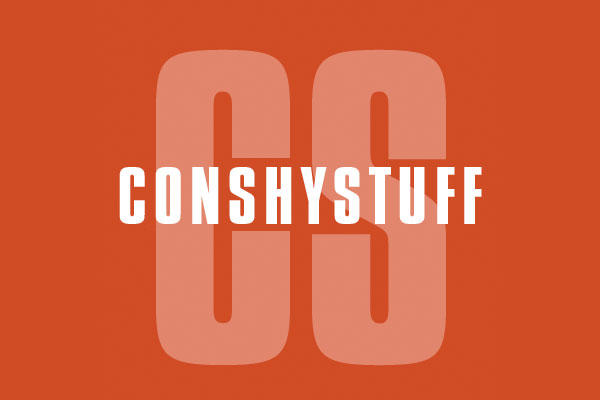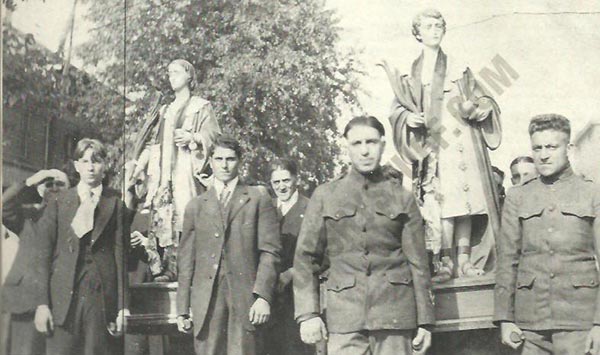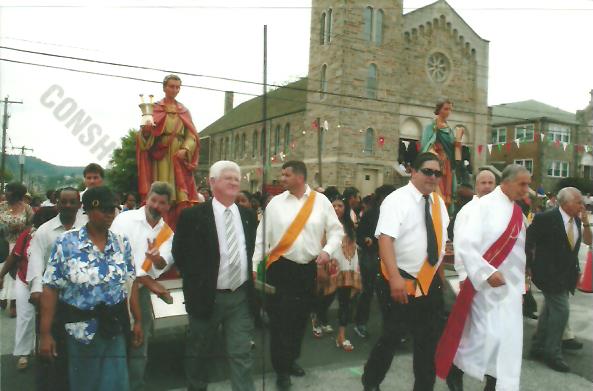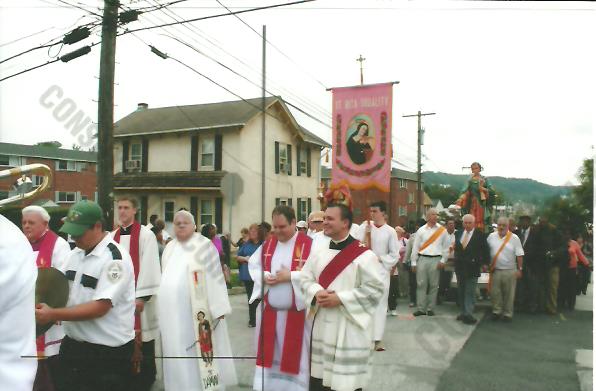
This & That by Jack Coll
July 20, 2014
The Greatest Athlete, EVER; The Story of Leroy “Satchel” Paige
July 31, 2014CAN’T THE ITALIANS JUST SHAKE IT OFF AND MOVE ON?

CAN’T THE ITALIANS JUST SHAKE IT OFF AND MOVE ON?
Where Ya Gonna Go?
By Jack Coll
In and around Conshohocken the Italians have come up with a new greeting, “Where you going,” “Where you gonna go.” For a hundred and sixty years in Conshohocken the Italians would greet each other by saying “Hello,” “How are you,” “How’s the children,” and of course most of the conversations would end with “See you at church on Sunday.” Now-a-days Conshohocken Italians start their conversation with “Have you decided yet,” and most of the conversations end with “I don’t know, I haven’t decided yet.”
The new greeting is referring to the fact that SS. Cosmas and Damian Church, located at Fifth Avenue and Maple Street for more than a century has been closed by the Archdiocese of Philadelphia, forcing members of the congregation to merge with other area churches. St. Mary’s and St. Gertrude’s have suffered the same fate as SS. Cosmas when the announcement was made in early June of this year.
The church of choice announced by the Archdiocese for these closed churches to merge with is St. Matthew’s Church located at Third Avenue and Fayette Street. St. Matthew’s Church and parishioners have made every effort to welcome their sister churches with open arms and many of the displaced Catholics have attended mass at St. Matthew’s in an effort to start the healing, but many of the displaced Catholics have decided to attend mass at Holy Saviour Church in Norristown, or Sacred Heart Church located in the Swedesburg section of Upper Merion Township. Many of the displaced Catholics simply haven’t made a decision yet on where, and if they will attend mass at any area churches.
I recently sat down with one long time SS. Cosmas and Damian parishioner Armand Maresca, and I asked him flat out, “Can’t the Italians just shake it off and move on?” “I wish it was that simple,” replied Armand, “The closing of the church was a punch in the gut, when you take a clean punch to your mid-section it takes a little while to recover.”
A number of Italians who came to America and settled in Conshohocken came from Sicily, many of them came from the town of Sciacca on Sicily’s southern coast, and other parts of Italy. Following the Civil War for a period of about thirty years, a variety of social and economic disasters afflicted southern Italy and Sicily forcing many of the area’s residents to migrate to America with the promise of jobs and land acquisition.
In the final decade of the 1800’s Italy’s growing population made finding work, and land acquisition extremely difficult. A good portion of the population in Italy found work in the citrus and wine industries but both industries suffered from foreign competition. A series of earthquakes and an epidemic of cholera forced a good portion of the Italian population onto boats, many of them hoping to make money and return to Italy to purchase land, and take care of their families, many of them did just that.
However a larger portion of the Italian population who choose to jump on a boat and seek a better life in what they called the “promise Land” chose to stay in America, they later would send for family members and assist relatives in relocating in America. In the end the strong family ties that characterized the Italians’ way of life helped to maintain close communications with family members in their homeland.
With more jobs than residents at the turn of the century, Norristown, Bridgeport, Conshohocken, Mogeetown and the Black Horse section of Plymouth Township became primary neighborhoods for the Italians, and this brings us to the need, and formation of the early Italian churches and societies.
The Conshohocken Italians often attended St. Matthew’s Church then, located on the corner of Hector and Harry Streets back around the turn of the century. Because of the language barrier most of the Conshohocken Italians would often travel to Norristown via horse and buggy to attended Sunday mass at Holy Saviour Church, founded by the Norristown Italian congregation in 1903.
As cold weather approached in the fall of 1911, the Conshohocken Italian’s gathered at Dave Little’s Opera House once located at the corner of First Avenue and Fayette Street, (currently Light Parker Furniture). Taking a horse and buggy with new-born infants and young family members to Norristown during the harsh winter was risky business at best. A buggy or carriage malfunction could leave a family stranded for hours in the weather before help might come-along. The Italians gathered on the second floor of the opera house, where St. Matthew’s and Conshohocken High School’s would hold their annual high school graduations, and started attending mass in December 1911, before being granted a charter for the formation of a church in January 1912.
A large portion of Conshohocken’s Italian population came from the Province of Isemia in Italy, where there was a shrine dedicated to SS. Cosmas and Damian, twin brother physicians who were martyrs for the faith and whose names had appeared in the Canon of the Mass for centuries. The brothers, who trained in the practice of medicine treated sick Christians and refused payment for their patients. They gave credit to God for their cures. This practice drew the wrath of a Roman magistrate, who ordered the brothers beheaded in 300 A.D.
Consequently, these saints were named the patrons of the new parish that was born at Little’s Opera House in the fall of 1911. The Italians who had also long settled in Bridgeport finding work in the textile mills would then travel to Conshohocken for Sunday services spoken in their native tongue until they banded together to form Our Lady of Mount Carmel Church in 1924.
Following the appointment of Father Nicola Coscia on March 1, 1912 plans to construct a permanent church for SS. Cosmas and Damian began but not without some criticism from a number of the parishioners. Bishop Prendergast negotiated the sale of property located on the southwest corner of Fifth Avenue and Maple Street from Hiram Corson for $1,200. It was the Bishop’s intention to construct a church for the growing Italian population. However a large number of parishioners balked at the purchase of property sitting high on the hill at Fifth Avenue and Maple Street. The property was part of a farm sitting on a hill, at the outskirts of town, a number of the faithful wanted a church in the middle of town. However other parishioners praised the Fifth Avenue decision due to its proximity to Little Italy. (Little Italy was the name given to the area of Maple Street from Elm Street to Fourth Avenue because of all the Itialians who lived along that stretch of Maple Street at that time.)
The first church was a little red brick building, meant to be a temporary church until a bigger and better church could be built on the property. The location of the church was on corner of Maple Street where it met the alley between Fourth and Fifth Avenue. The first church was completed in the spring of 1913, unfortunately the membership had already outgrown the facility by the time it opened for service. The church could seat 80 parishioners but more than 170 families were church going members of SS. Cosmas and Damian Church in 1913.
Plans for a larger basement church were drawn up immediately but World War I put a hold on all construction. When the war clouds cleared and the finances were raised work on the second church began in the fall of 1926, a stone foundation for a permanent church was underway.
Father Coscia died in the spring of 1927, following the appointment of a temporary Pastor, Father Zaccaria Priori, then Father Victor Strumia was appointed Pastor, between his 40 years and Rev. Louis DeSimone ten years the church experienced their greatest growth.
By the fall of 1940, once again it was time to expand as the membership had outgrown the basement church, the great depression was behind us but war clouds were looming, and by December 1941, it was clear, there would be no raising the roof on the basement church, and any and all young Italian men, along with every other available young men in the country were needed to fight a war.
A decade later in 1951 the roof was pulled off the basement church, and prepared for the expansion. At that very same time St. Mary’s had just completed construction on their new church, and agreed to allow the members of SS. Cosmas and Damian Church to use their old facility once located on the corner of Elm and Maple Street during construction of the new church.
Like the two former church’s that came before the construction on the current facility, it was built on the backs of its parishioners. There was the Fraternal Association of SS. Cosmas and Damian formed in 1907, they built their headquarters at Third Avenue and Maple Street in 1930. There was the Columbus Citizens Club formed in 1920, the SMS Society of Mutual Support, later it became the Andrew Lannuti Post No. 18. All these organizations contributed heavily to the churches built at Fifth Avenue and Maple Street.
According to church sources early Italian Families who also carried the weight of the financial strain on their shoulders included members of the Gravinese family, DiCiurico and Sperlunto families. Early contributors included members of the Tornetta family, Bruno’s, Miraglia, DeMedio and Conicelli families. The Cardamone’s were big contributors as was the Ciarvarelli family, Martinelli and Bello families. The Cianelli’s, the Maresca’s and the Ferenchak’s. I could never track down and print all the contributors that have helped to spell success for this church but I would like to mention the Bruni’s, DePallo’s, Mastercola’s, Russo’s, Bianco’s, the Carr’s, Coccia’s, D’Alessandro’s, DiJiosia’s, and D’Annunzio’s. There were the early Gambone families, Zinni families and Desimone families.
These founding families and the offspring of these founders were the sweat equity behind the success of the church, and let’s not forget Emmanuel Utti, a Lafayette Hill artist who painted the dozens of religious vignettes on the church’s etched ceiling and Paula Himmelsback Balano the crafts-woman who created the stained glass windows funded by the church contributors.
I requested an interview with Armand Maresca in an effort to discuss the closing of the church with someone who knows something about SS. Cosmas and Damian Church. Armand admitted to knowing a little something about the church. Armand was baptized in SS. Cosmas basement church in 1930 by Rev. Victor Strumia, and six years later became an Altar Boy. By the time Armand was 10 years old he began to sing at Weddings and Funerals in Latin. Armand paused to giggle about his very first wedding singing job, “my fee was one dollar” noted Armand, “the groom stuck me, hasn’t paid me to this day, a dollar was a lot of money back then.”
Armand spent his entire life with SS. Cosmas Church, he became a Lector, a Cantor, and a Deacon, Armand prefers talking about happier days with the Church. Armand was born on West First Avenue before moving to West Fourth Avenue where his parents yard, stretched out to meet the Churches back window. “We had this assistant pastor onetime” said Armand, you just knew it was gonna be a good story just by the way he said, “We had this assistant pastor one time, back when I was an Altar Boy living on West Fourth Avenue. Catharine Logan was Father Strumia’s housekeeper, and she would just yell out the back window for me or one of my brothers all the time to tell us that Father needed an Altar Boy for one reason or another. (Armand’s parents were Michael and Teresa who had nine children, Nick was the oldest son who survived the invasion of Normandy under General Patton. Then there was Dominic who passed away as a baby, Ann, Armand, Anthony, Claire, Teresa who passed away young, Mary Teresa and Rita.) So one day Catharine yells out the back window for Armand and his brother Anthony telling them that they were needed to serve for a 3 a.m. mass. “We had this assistant Pastor at the time named Father Mariano who liked to do strange things, but was a pretty good Pastor. So we had no idea why we were serving a 3:00 a.m. mass but we showed up and he performed the entire mass at three in the morning.” So I asked Armand was anybody at the mass, “Yea, there was this one old lady named Mrs. Splendora, she sat there and Father served the entire mass.”
Armand’s father left Italy when he was 14 years old and went to Canada, eventually he worked his way to the United States at the age of 16 or 17 years old. Armand’s father Michael, and his uncle Tony’ (Michael’s brother) worked on the railroad, got picked and paid day by day like dock workers, you showed up in the morning and if you were picked to work for that day you worked, if you didn’t get picked by the foreman you went home. His father later found work for Henderson’s Quarries in Upper Merion Township, and later worked for Lee Tires.
I sat in Armand and Theresa’s dining room for a couple of hours listening to Armand tell stories about his childhood, how he sold papers in front of the Riant Theatre and later turned the newspaper corner over to his brother. Armand’s Great Grandfather, Dominic Cianelli, brought men over from Italy who were experienced in stone work, together they built St. Matthew’s Church on Fayette Street. As Armand tells it they shipped the stone and marble on a barge along the Conshohocken Canal where horses and wagons met the barge to haul the stone and marble to Third Avenue and Fayette Street. Armand’s uncles Tony Cianelli and Nick Tenaro ran a barber shop on West Elm Street.
Armand and Theresa talked on and on, we often drifted off topic discussing a number of the businesses once located on lower Fayette Street, man they were good days, when the old American Store was located at First Avenue and Fayette Street. Armand said, “Well there was the Perfection Bakery, Durbas Shoes, the Tradesman Bank, Pat Lacey’s Cigar Store, all the old guys used to hang out in the back room there,” Armand said with a smile. “There was Zablonski’s Men’s Store, I’m pretty sure his brother owned the Norris Theatre in Norristown, Jacobson’s Men Store and Charlie Hicks.” It was good to see Armand reminisce, his mind cleared of the church closing, if only for a moment.
When I think about the Italians who jumped on a boat more than a hundred years ago, and stepped off in America, they must have considered Conshohocken, Bridgeport and Norristown the Promised Land. Think about what they witnessed in their lifetime, coming from a poor background, they not only witnessed the building of a church but they were part of it, as they stood back and watched Fayette Street develop into this retail hub, they became part of it. By 1930, a number of the more than 240 retail outlets in the borough were Italian owned, I’m talking about Italians who stepped off the boat just years earlier. They witnessed the invention of the horseless carriage, think about what that looked like to all the people back then, it was magic, a carriage that moved without a horse in front of it pulling it along.
And for all the Italians who would risk it all to open a business, and to all the Itialians who would go to work in the many mills and steel plants, they did two things with their hard earned money, invest it in their family and their church.
Armand Maresca has seen it all, he served with every Pastor at SS. Cosmas and Damian Church with the exception of the first Pastor Nicola Coscia. In 1936, as an altar boy he served under Rev. Victor Strumia, he worked with Rev Louis DeSimone, Rev. Nicholas Lazzaro, and of course Rev. Gasper Gennuardi. Armand has been married to his wife Theresa for 62 years, and has been serving in the church one way or another for 78 years. That is a staggering number, 78 years of service to SS. Cosmas and Damian Church.
And after 78 years of service I asked Armand how he felt, “angry, sad, disappointed, when they announced the closing of SS. Cosmas I felt lost,” noted Armand, “you could stick a knife through my heart,” that about says it all.
Talking to Armand I could hear the pain in his voice, and I recognized the hurt in his eyes. Isn’t it sad, I sat with Armand and Theresa for a couple of hours chewing the fat about SS. Cosmas, Armand must have mentioned more than a thousand good times he had at the church, he talked about how him and Father Victor, (Strumia) would go to Woodland Beach to go crabbing, they would catch the crabs and steam them right there on the beach. He talked about watching families grow up in the church, and he reminisced about other stories that brought smiles to both Armand and Theresa’s faces.
In the end, with all the good times mentioned, it’s the one bad thing that will always be remembered, the one thing, Armand, and all the rest of SS. Cosmas parishioners will remember, the closing of the church. I was reading a local newspaper the other day, an article on Our Lady of Mount Carmel Church, in Bridgeport, the sad thing was they didn’t even call it a church, it was “Our Lady of Mount Carmel WORSHIP SITE, I wonder if that makes SS. Cosmas and Damian Church, SS. Cosmas and Damian Worship Site? Are all the former parishioners required to call SS. Cosmas a WORSHIP SITE?
The closing of the church hits you like a knockout punch. You’re dancing through life, you’re bobbin and weaving, you’re riding the highs and lows, and out of nowhere, a left hook, you never see it coming, and you find yourself lying on the canvas flat on your back looking up saying where did the years go? Talking to Armand reminded me of a Kenny Chesney song called “Don’t Blink.” A lyric in the song goes “Don’t blink, a hundred years goes faster than you think.” Sometimes I think I’d like to go back 25 or 30 years, perhaps I would have taken the time to enjoy it all just a little bit more than I did.
In some small way Armand helped me put it all in perspective a little bit!
Hey Cosmas, thanks for the feast, thanks for the people I got to know over the years, thanks for the good times, thanks for the memories, thanks for the chat Armand, it was good for the soul.
Hey, Where Ya Gonna Go?
I don’t know,
I just don’t know.





